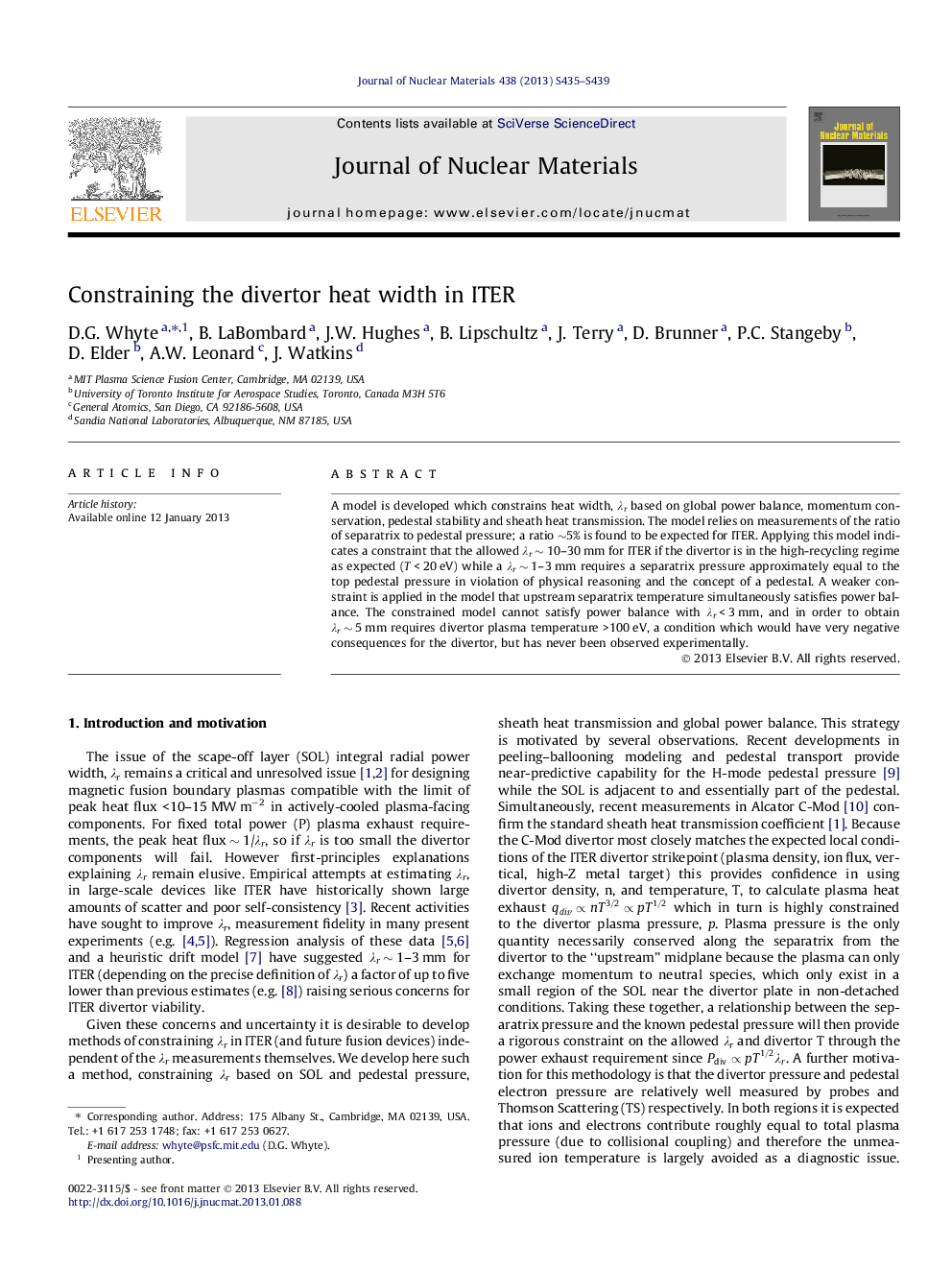| Article ID | Journal | Published Year | Pages | File Type |
|---|---|---|---|---|
| 10645028 | Journal of Nuclear Materials | 2013 | 5 Pages |
Abstract
A model is developed which constrains heat width, λr based on global power balance, momentum conservation, pedestal stability and sheath heat transmission. The model relies on measurements of the ratio of separatrix to pedestal pressure; a ratio â¼5% is found to be expected for ITER. Applying this model indicates a constraint that the allowed λr â¼Â 10-30 mm for ITER if the divertor is in the high-recycling regime as expected (T < 20 eV) while a λr â¼Â 1-3 mm requires a separatrix pressure approximately equal to the top pedestal pressure in violation of physical reasoning and the concept of a pedestal. A weaker constraint is applied in the model that upstream separatrix temperature simultaneously satisfies power balance. The constrained model cannot satisfy power balance with λr < 3 mm, and in order to obtain λr â¼Â 5 mm requires divertor plasma temperature >100 eV, a condition which would have very negative consequences for the divertor, but has never been observed experimentally.
Related Topics
Physical Sciences and Engineering
Energy
Nuclear Energy and Engineering
Authors
D.G. Whyte, B. LaBombard, J.W. Hughes, B. Lipschultz, J. Terry, D. Brunner, P.C. Stangeby, D. Elder, A.W. Leonard, J. Watkins,
